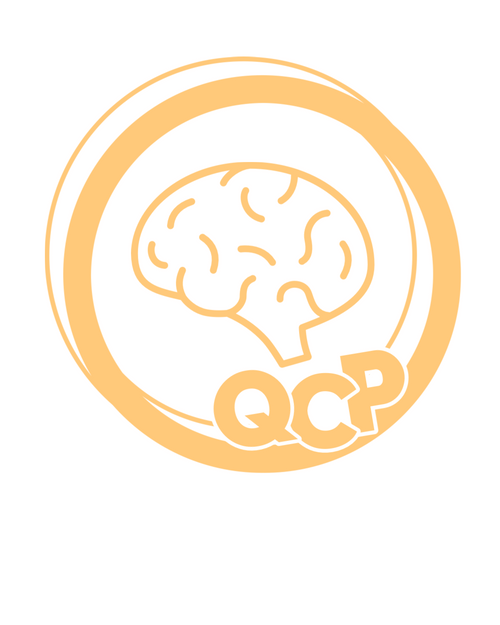My Fellow Citizens,
I haven’t read Ryan Holiday’s recent book, but I’ve started to suspect that this is the right time for it. The title is “Stillness is the Key.”
Ryan Holiday is the reason why I keep Marcus Aurelius’s Meditations within reach at my desk. He has turned these reflections and other stoicisms into a guide for modern life. Ryan’s reflections on stillness are going to take us places today, and there is no required reading for joining the trip.
I resisted reading Holiday’s work. This New York Times headline neatly wraps up all the reasons why, “Ryan Holiday Sells Stoicism as a Life Hack, Without Apology.” There’s also an image of Ryan sitting outside a metal barn with a brown cow in the background.
He is from Austin, Texas. The cow proves the Texas connection, I guess.
But I was wrong to resist the books. I have now read some of Ryan’s previous titles more than once. I’ve referred to them in conversation and highly recommended them. I’ve even gifted them to others. I feel confident that his book The Obstacle is the Way made it into a previous newsletter too.
For the sake of this book about stillness, Ryan wrote a guest post last September, “28 Ways to Find the Stillness You Need to Thrive.” So, the new book is going to make it into the newsletter before I finish reading it.
Holiday’s definition of stillness suggests he is writing about an essential skill. That might be true at any time but especially today. He defines stillness as the ability “to be steady while the world spins around you.” Steadiness is what I wish for after checking the headlines in the morning.
I know I have a responsibility to keep up with the news, but that’s when it feels like we’re living on a tilt-a-whirl. More steadiness, please.
It’s not surprising that “stop watching the news” appears early on Ryan Holiday’s list of 28 ways. About halfway through the list, you will find advice that’s a little less obvious:
“Take mindless mental wanderings.”
In his explanation, Ryan referred to a Gaelic phrase, “ciúnas gan uaigneas,” and notes that it translates to “stillness without loneliness.” When looking to learn more about the phrase, I found that award-winning author, Robert McFarlane, used it in a tweet marking the Easter holiday in 2019. McFarlane explained that it “carries a sense of calm solitude, of being (even briefly) outside or beyond the usual chaos and noise.”
It’s time to wander outside the noise. As Plato would say, let’s walk together.
Ryan’s words forged an instant connection back through time to words I carried away from a visit to James Madison’s Montpelier. The materials for the NEH Landmarks Institute once offered there included “A Brief System of Logick, 1766-1772.” These words are not Madison’s words. They are most likely his college notes.
This mental wandering comes courtesy of the notes Madison scribbled in an old notebook. He was likely studying logic at the College of New Jersey, a class taught by John Witherspoon.
First, Madison’s notes tell us an idea is a “notion or picture of a thing in the Mind, as when you think of a Horse, you form a sort of Image or picture of him in your Mind.” If that object is “absent when we think of it,” we’re using imagination. We’re all seeing an imagined horse now, right?
Then there’s the question of how these ideas make their way to us. Fire up your imagination for this next part:
“Ideas arise in the Mind by the mediation of senses, which like so many Windows admit the light of Knowledge into the Soul.”
What do you see in your mind’s eye now? Something sun-soaked. Maybe cathedral-sized windows. And the limitless capacity of our minds and souls. That’s the place where we need to wander more.
If there’s something that’s helped you wander away these last few weeks, reply to this email and tell me about it. I’ll turn those recommendations into a string of social shares, and we’ll wander together.
Let’s start wandering.
Shellee
Questions of Civic Proportions
“Logic will get you from a to b. Imagination will take you everywhere.”
—Albert Einstein
What do we know about the places we’ve been and the places we’ll go?
Citylab invited readers to share “maps of their world in the time of coronavirus.” The instructions were to “draw a map of your neighborhood in ways that are important to you.” The results are colorful, fun, and will help you appreciate your neighborhood too. One creation includes the note, “I cannot go out at all. I can imagine things.”
There’s a more traditional map in operation behind Michael Pollan’s review of a new book, Coffeeland: One Man’s Dark Empire and the Making of Our Favorite Drug. I looked up place after place on Google maps as I read his article in The Atlantic. You can follow the rise of Hills Brothers Coffee all over the map and land back in the middle of a very familiar, and very important, coffee break.
That coffee break might not last long. Pollan writes:
“The world has only so many places suitable for coffee production. Climate scientists estimate that at least half of the acreage now producing coffee—and an even greater proportion in Latin America—will be unable to support the plant by 2050, making coffee one of the crops most immediately endangered by climate change.”
He suggests that we’ll have a pill to deliver all the productivity increases that coffee provides. No break room or office coffee service required.
What more can we see once we can see music?
There’s now a robot prepared to battle rap. That just sounds fun, but it’s proof of an Artificial Intelligence that has learned to write jazz. Watch Shimon, the robot, play with musicians or watch a visualization of a human pianist playing the Top 10 Most Difficult Piano Pieces. A much simpler computer, a Raspberry Pi, turns the pianist’s moves into a dazzling display of light and movement.
If you want to wander farther than that and remember a hit toy called a Furby, check out this Furby Organ. Look Mum No Computer made it possible. He is either an electronics wizard or a charming manifestation of pure evil.
How can a good story bring us together?
Azar Nafisi wrote a whole book to answer this question. With her 2014 book, The Republic of Imagination: A Life in Books, Nafisi shares how she discovered America through its books. Huck Finn became her idea of what it meant to be a good citizen.
From the book’s introduction:
“Stories are not mere flights of fantasy or instruments of political power and control. They link us to our past, provide us with crucial insight into the present and enable us to envision our lives not just as they are but as they should be or might become. Imaginative knowledge is not something you have today and discard tomorrow. It is a way of perceiving the world and relating to it. Primo Levi once said, ‘I write in order to rejoin the community of mankind.’ Reading is a private act, but it joins us across continents and time.”
Good Work: Saving Nina Simone’s Childhood Home in North Carolina
“Nina Simone. Legendary musician. Social justice champion and global inspiration.” That’s how the crowdfunding video introduces the woman who is also known as “the high priestess of soul.”
An effort to protect Nina Simone’s childhood home in Tryon, North Carolina, began in 2016. A group of artists purchased the building to save it from being demolished. Two years later, in August of 2018, the National Trust named the home a National Treasure. Now the effort needs to raise the money to get the work done so the home can be open to the public.
Last summer, this fundraising work started with the crowdfunding campaign mentioned above and a live performance in the three-room home. Come Hear North Carolina hosted a series of events to draw attention to Simone’s legacy and worked with the National Trust to host an event where a powerful voice would sing Simone’s songs in her childhood home.
That’s what you’ll see in the video above. Musician Vanessa Ferguson from Greensboro, North Carolina, joining the effort to raise funds and honor Simone’s legacy.
This NPR playlist of 5 songs will reacquaint you with Nina Simone’s voice, but don’t skip Ferguson’s performance. Throughout the video, she offers her reflections on how Simone’s work influenced her own.
Ferguson said the legendary musician was someone who “wants to define freedom” and to Simone that freedom was “no fear.” Then Ferguson adds, “and to me, she was a very fearless woman.” Following Simone’s lead, Ferguson tries to use her art to “say something or reflect the times. I think it’s important to use art to connect people to history.”
There’s power in Nina Simone’s voice, and there’s power in her story. It’s a lesson about our past but it’s also an example for pushing ourselves forward. Ferguson tells us:

